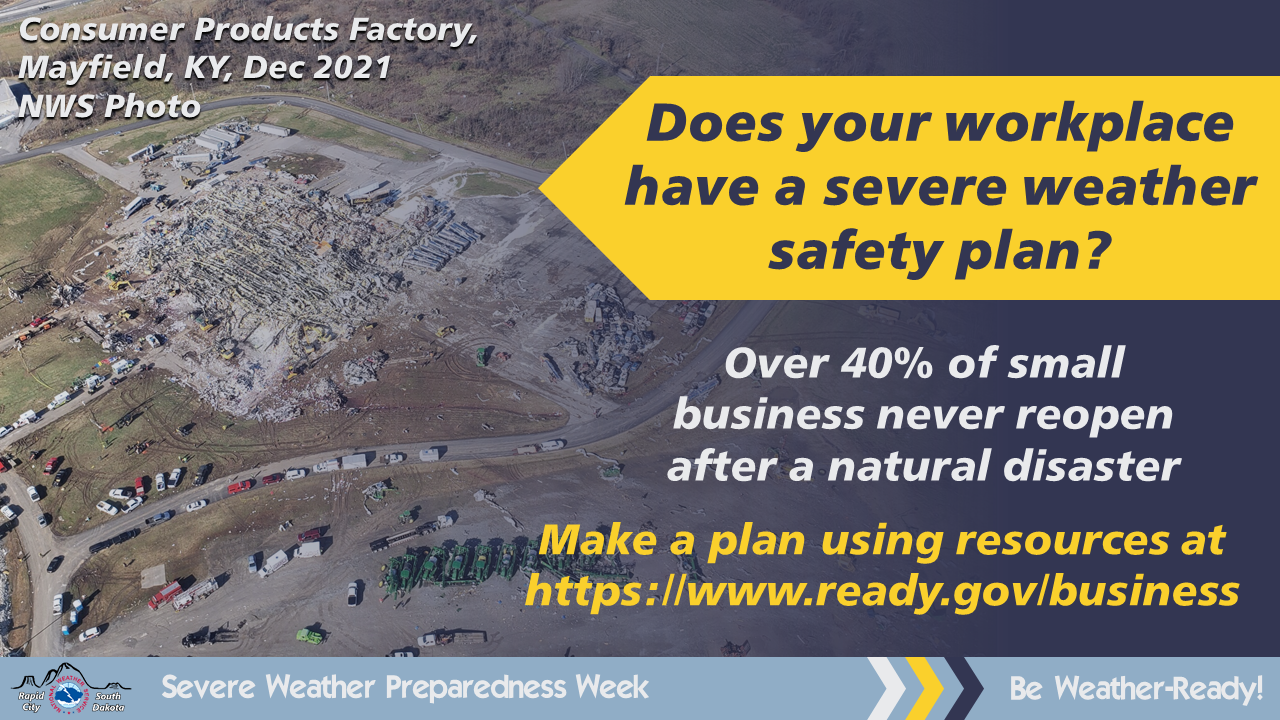
Heavy rainfall from scattered thunderstorms is expected across the Southwest, Intermountain West, and Plains. Isolated dry thunderstorms may initiate additional fires across the west. The coastal Carolinas may experience flash floods in the coming days due to repeated thunderstorms. Additionally, a wave of intense summer heat will hit the Southern Plains and central Gulf Coast States this week. Read More >
 South Dakota Severe Weather Preparedness Week will be observed April 25-29 as a time for people to prepare for tornadoes, severe thunderstorms, flash floods, and heat as the summer season approaches.
South Dakota Severe Weather Preparedness Week will be observed April 25-29 as a time for people to prepare for tornadoes, severe thunderstorms, flash floods, and heat as the summer season approaches.
The annual tornado drill initiated by the National Weather Service and broadcast on NOAA Weather Radio, local television and radio stations, and cable television systems has been discontinued. However, communities may be conducting local drills.
This year as people are working at their offices again, employers and store managers are encouraged to review and update their storm safety plans. The deadly tornadoes that destroyed a factory and warehouse in the Midwest last December stress the need for all workplaces to have a plan to get warning information and how employees should shelter.
Warnings may not be heard or seen in workplaces if employees do not have radios, TVs, or their phones on. Sirens are intended to alert people outdoors and not be heard inside buildings. A NOAA Weather Radio should be placed where someone will always hear it and use a paging system to notify other workers. People should be advised not to leave and possibly be caught in the tornado.
The best place to take cover is a tornado safe room or shelter that meets FEMA Guidelines or ICC/NSSA 500 Standards. If one is not available, consult a professional engineer to determine the Best Available Refuge Area. In addition to the structural design of a shelter, it should be large enough for all employees, customers, and clients who could be in the business when the storm approaches, as well as nearby pedestrians and travelers who may need to take shelter. Other considerations include stairway access and accessibility for disabled people.
After a safety plan has been developed, it should be tested to ensure it will work and all employees know what to do.
Resources to help businesses create safety plans are available at https://www.ready.gov/business
Weather safety information can be found at https://www.weather.gov/safety/